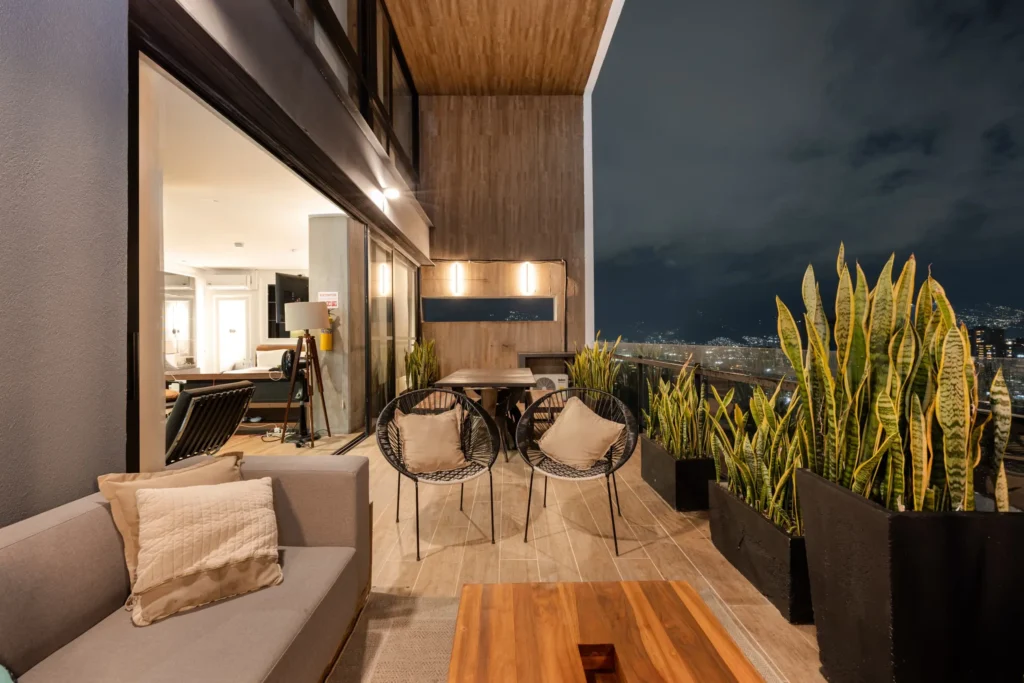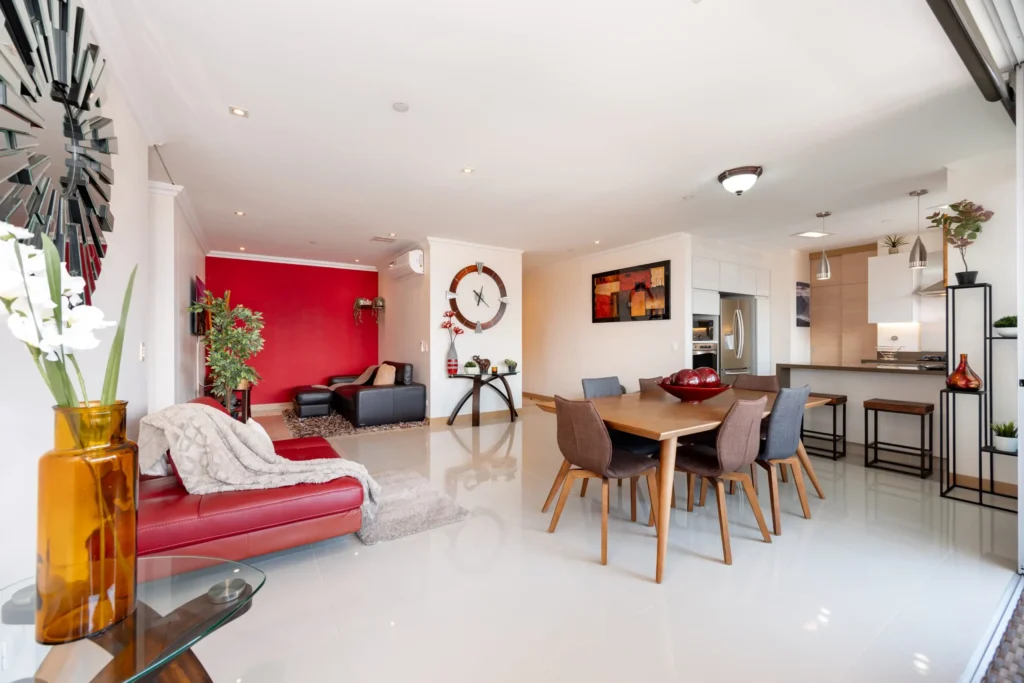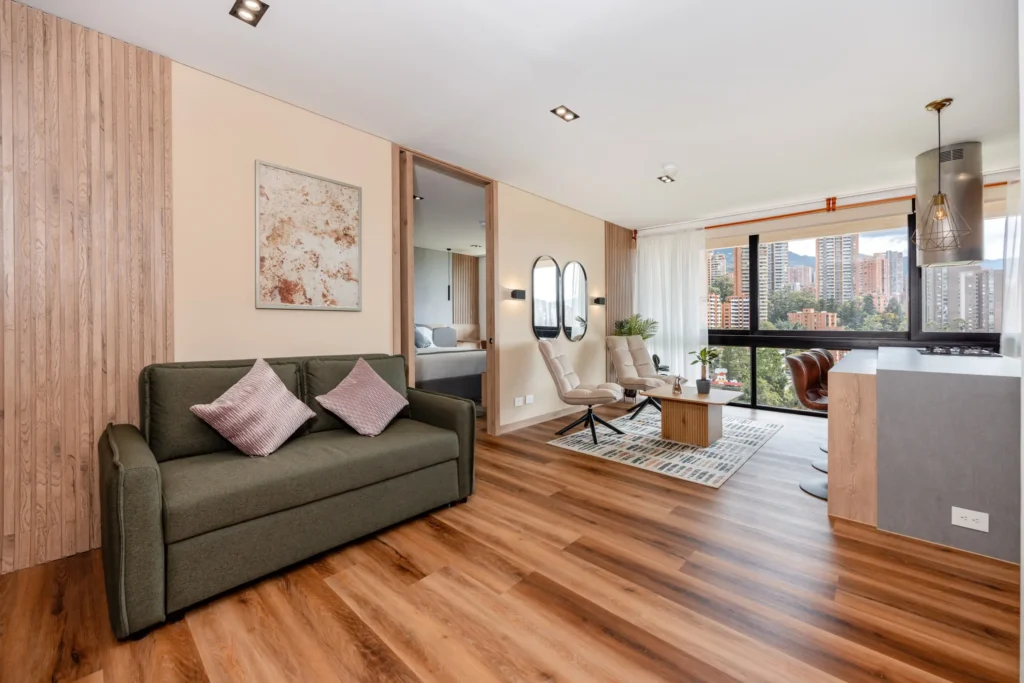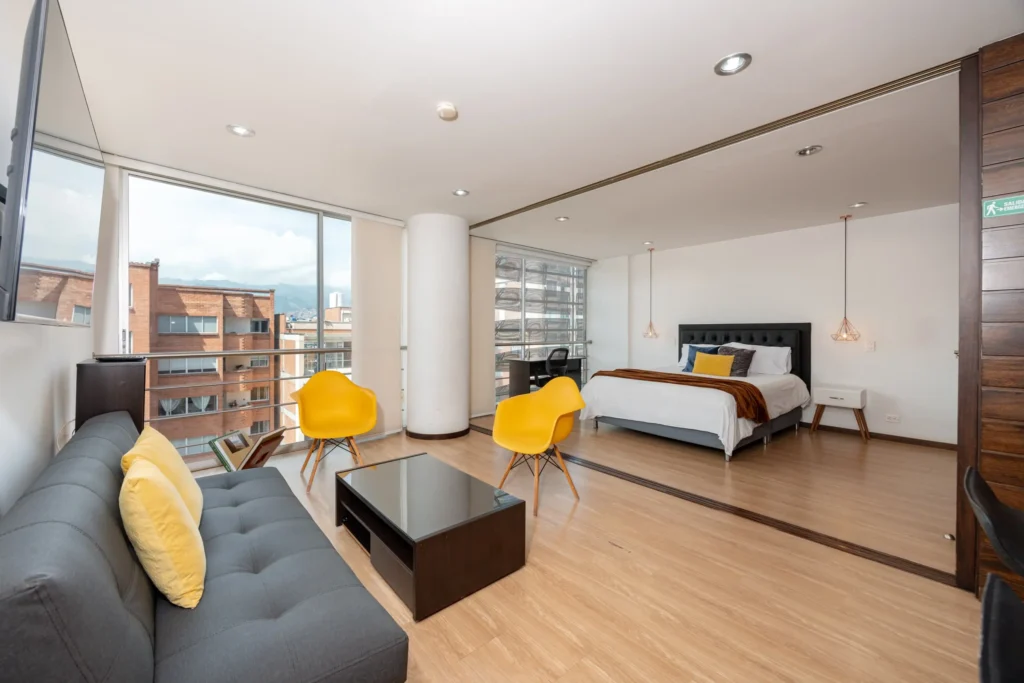TLDR? There’s lots to learn about coffee in Colombia, and the best place to do so and to try a coffee tasting is at the Marquee Hotel!
As a Londoner, I live up to many a British stereotype. Tea lover is one of them; I even carry my own English Breakfast tea while traveling.
Admittedly I’m not really a coffee person. It always tasted super bitter for me. So, when I do enjoy a cup, my order usually resembles sugar and milk with a splash of coffee, rather than the other way around.
I’m not sure binging on sachets of instant coffee to pull all-nighters in university counts. So, I set myself a challenge; can I be converted into a coffee lover in Colombia? Medellin is the ideal place to find out!
Aafter picking coffee on a farm in Salento, I headed back to Medellin and straight to Marque Hotel for the Coffee Tasting Experience.
A Brief Background of Coffee
Coffee is actually derived from a fruit grown on the coffee tree. These small red cherries take around one year to mature and be ready for harvest.
The harvesting in Colombia’s coffee region usually happens twice a year, in the rainy season. The quality of the taste will depend on the ripeness of the cherry.
We in fact use the seeds from within the coffee cherry to roast and brew. After the damaged or over-ripe cherries are separated, this outer skin can be removed using 3 different methods.
This first and oldest method simply lays the harvest out evenly in the sun for it to dry. This process takes anywhere from 10 days to 3 weeks.
The wet process, and the second method, involves placing the cherries in a combination of water and sugar and allowing the enzymes to eat away at the remaining fruit. The last process is leaving the coffee to ferment in its own natural liquids.
In Colombia, they tend to use a combination of methods.
However, coffee production typically takes place in the rainy region of Colombia. So, although the sun-dried way produces the best quality, it is less likely to be used.
The taste and quality can then be modified by letting it age for a few years or using a chemical-free process to create decaffeinated coffee.
What Makes Colombian Coffee So Unique?
It’s no secret that Colombia is a world leader in coffee exportation. A few key elements set it apart from other producers.
The natural mountainous terrain makes for the absolute perfect conditions for growth. This coffee triangle of Caldas, Risaralda, and Quindío, has the tropical climate, high rainfall, just enough sun, and biodiversity to make it geographically supreme.
However, an amazing climate alone is not enough to ensure quality coffee. The processes mentioned previously are also expertly executed, with every single cherry produced in Colombia being handpicked.
Yes, coffee pickers are paid good money to hand sift through the unripe, damaged, or overripe beans, something a machine just can’t do as accurately.
It’s all in the taste. There are four different types of coffee, and Colombia happens to be the perfect terrain to grow the best: Arabica. This coffee is considered superior for its sweet and light taste.
Still, most importantly, it’s around 50% less caffeinated than other variations. As a result, arabica will give you a fuller flavored, richer brew.
Marquee’s Coffee Tasting Experience
If you’re not the biggest coffee connoisseur like me, don’t worry! The workshop leader Javier Ignacio, is a professional barista with 6 years of experience. He’s highly knowledgeable and super friendly.
He will take you on an extensive journey through everything coffee, from production to brewing.
The workshop is held in a cozy but spacious private space; you can relax and have fun while experiencing some fantastic brews. The session lasts for around 90 minutes and is pretty affordable too.
Also, it’s available for everybody, not just hotel guests!
Viewing the Beans
Javier presents a selection of four types of coffee beans contained in ramekins. After a bit of discussion about the history of Colombian coffee, he explains that the coffee displayed varies in quality. The quality depends on the fermentation method.
Generally, people don’t know the difference between qualities as most coffee drinkers are used to drinking the bad quality stuff. This includes coffee from some pretty famous coffee shops and, of course, the instant variations bought in stores.
So, the majority of coffee drunk is actually burnt. This explains the strong bitter taste, and why we add lashings of milk and sugar as a cover!
The Coffee Smelling
Because most coffee is over roasted and burnt, it has a tobacco-like smell, so people don’t usually stop to take in the aromas. However, Javier explains that quality coffee actually has pretty nice fragrances.
You can detect sweet, floral, or bitter notes depending on the type. I got to smell the different roasted beans and guess their qualities. Initially, I felt as if I wouldn’t know what to look for. In England, where I’m from, all the coffee smells the same.
Javier assures me that this is the point of the workshop. It was created for people who aren’t coffee connoisseurs and even for coffee drinkers themselves, as most people haven’t experienced coffee that isn’t bitter and burnt.
He was right. Each coffee had a unique fragrance, something I had never encountered before.
I have a tremendous sweet tooth, so my favorite was the fruity, sweet-smelling bean. I didn’t know natural coffee could smell like that!
Experiencing the Ground Beans
The ground beans took the aromas to a heightened level, as naturally, this process will release more fragrances.
At this point in the workshop, I’m still attempting to guess which coffees are of higher quality. I stuck with my original guess of the sweet, fruity coffee being the best. But Javier was very tight-lipped; he wasn’t giving away any answers!
Tasting the Coffees
The best part of the experience is when Javier pours the hot water on the ground beans, and you get to taste the drinks!
The first two samples tasted how they smelled; basic and like traditional coffee. Although one was a bit smoother than the other.
The third sample was really dark and looked especially strong. I jokingly told Javier I was scared to try it. When he finally revealed the qualities, he said I was right to be scared as that was the lesser quality!
My favorite sample tasted so fragrant and naturally sweet that I proclaimed, to Javier’s delight, that I may not need to add milk or sugar after all.
Finishing the Workshop
So, it turned out I was pretty spot on all along, and my favorite coffee was indeed the best. I went from disclaiming that I know nothing about coffee to getting them all right.
The senses don’t lie!
My number 1 pick comes from the arabica tree and uses’ the sun-dried fermentation method. It’s the most expensive bean for farmers to sell, and is also Javier’s favorite.
If I could go into a cafe and get this specific blend, I might just order it over a cup of tea. It has the same fruity, sweet notes I search for in drinks. Now that I’ve experienced these delicious flavors, I’m excited to go on the coffee journey.
Julian may have just converted me to a coffee lover!
But not so fast, I would need to go to specific places in Medellin, as the average Colombian café won’t serve this variation of the beverage.
Why is Good Coffee So Hard to Find in Colombia?
So, you would have noticed that Colombia’s best coffee is exported. Your favorite coffee shop back home might have ‘Colombian grown’ at the forefront of its marketing. However, within the country, you may have a hard time finding actual Colombian coffee.
Julian explains that coffee only became a standard beverage in Colombia around 30 years ago. However, although Colombians drink coffee, it hasn’t got the same huge popularity it has in America or Europe. So, the country’s best beans were exported to the west.
Finally, when western tourists began arriving in the country 15 years ago, there was a growing demand, and ultimately, it opened up a market for quality Colombian coffee within the country.
Pergamino Café was the first café to sell native, quality coffee in Medellin; initially, its primary customers were the foreign travelers.
So, you generally won’t see local cafés and restaurants serving the good stuff. You may have to do a little extra digging. However, Marquee’s café and restaurant is an excellent place to start.
Enjoy a Luxury Coffee Tasting Experience in Medellin
The coffee workshop with Javier was really interesting and an exciting experience for my senses! I would highly recommend coffee tasting at Marquee hotel.
If you like this blog you might like the Casacol Instagram page to keep up with all the new articles or sign up for the monthly newsletter at the bottom of this page. Anything we need to update or correct? Care to contribute? Email us at blog@casacol.co.







